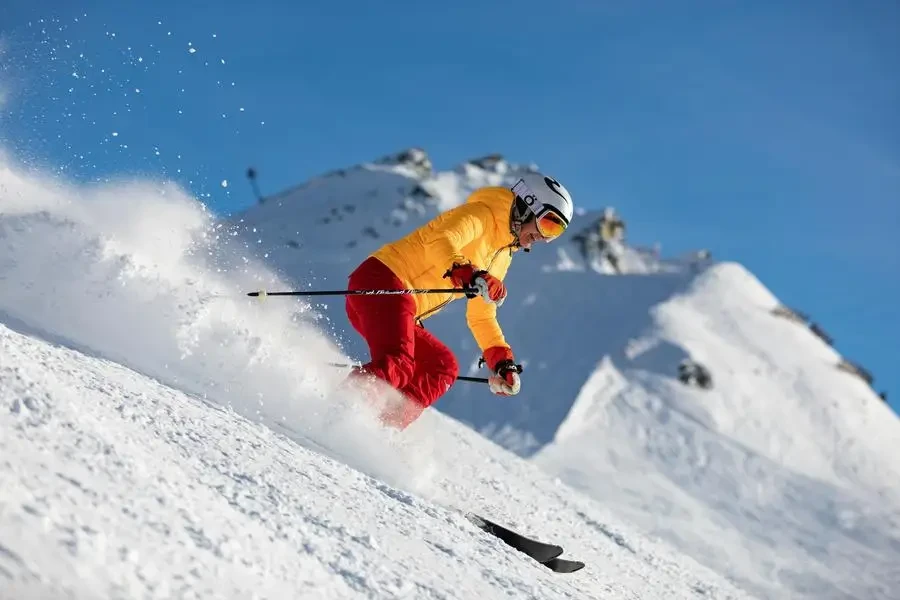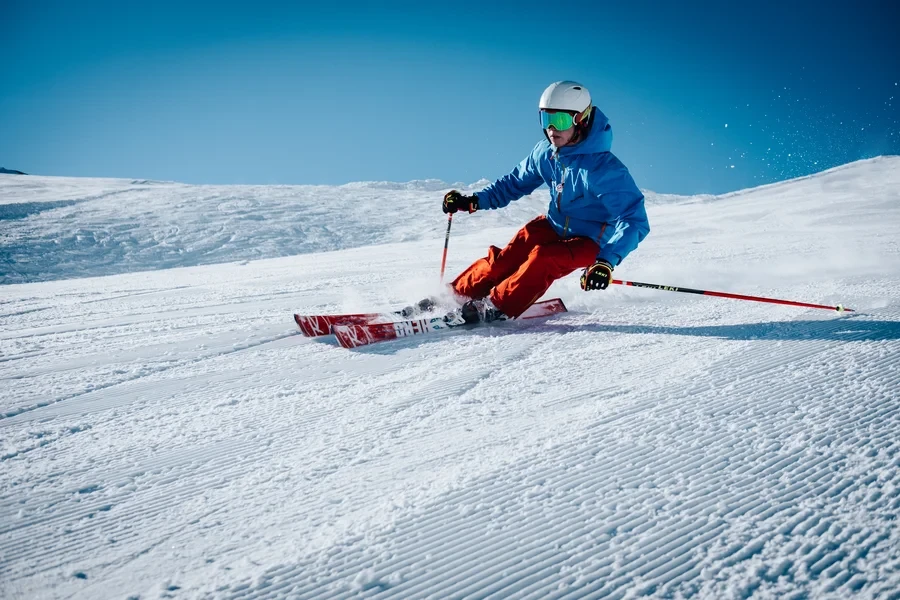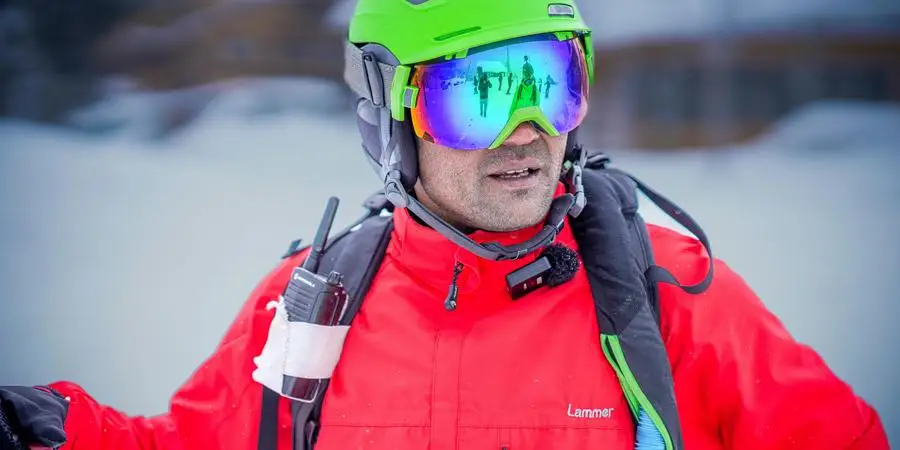The ski helmet market has seen significant growth in recent years, driven by increasing awareness of safety, technological advancements, and changing consumer preferences. This article delves into the market dynamics, key players, and regional trends shaping the future of ski helmets.
Table of Contents:
Market Overview
Innovative Materials and Designs in Ski Helmets
Technological Advancements Enhancing Safety and Comfort
Ensuring the Perfect Fit: Sizes and Adjustability
Conclusion
Market Overview

The Growing Demand for Ski Helmets
The demand for ski helmets has been on a steady rise, fueled by heightened safety awareness among skiers and snowboarders. According to a report by Research and Markets, the global smart helmet market, which includes ski helmets, is projected to grow by USD 640.3 million during 2023-2028, accelerating at a CAGR of 14.87%. This growth is attributed to several factors, including the increase in governmental schemes supporting the production of smart helmets and the rising number of head injuries and fatalities in winter sports.
The increasing popularity of skiing and snowboarding as recreational activities has also contributed to the surge in demand. As more people take to the slopes, the need for protective gear, including helmets, becomes paramount. Additionally, advancements in helmet technology, such as the integration of impact-resistant materials and enhanced ventilation systems, have made modern ski helmets more appealing to consumers.
Key Players and Market Share
The ski helmet market is highly competitive, with several key players dominating the landscape. Companies such as ARAI Helmet Ltd., Forcite Helmet Systems Pty Ltd., and SHOEI Co. Ltd. are at the forefront of innovation, continuously developing new products to meet the evolving needs of consumers. According to Research and Markets, these companies are part of a robust vendor analysis that includes around 25 vendors, providing a detailed analysis of market size, trends, growth drivers, and challenges.
For instance, Forcite Helmet Systems Pty Ltd. has been recognized for its cutting-edge smart helmets that offer features like integrated communication systems and real-time navigation. Similarly, SHOEI Co. Ltd. is known for its high-quality helmets that combine safety with comfort and style. These companies, along with others, are investing heavily in research and development to maintain their competitive edge and capture a larger market share.
Regional Trends and Preferences
The ski helmet market exhibits distinct regional trends and preferences, influenced by factors such as climate, skiing culture, and regulatory standards. North America and Europe are the largest markets for ski helmets, driven by the high popularity of winter sports and stringent safety regulations. According to Research and Markets, North America accounted for a significant share of the global smart helmet market in 2023, with Europe following closely behind.
In North America, the United States and Canada are the primary markets, with a strong emphasis on safety and innovation. The presence of numerous ski resorts and a well-established skiing culture contribute to the high demand for ski helmets in these countries. In Europe, countries like Austria, Switzerland, and France are key markets, known for their world-class ski resorts and a strong tradition of winter sports.
The Asia-Pacific region is expected to witness the fastest growth in the coming years, driven by increasing disposable incomes, growing interest in winter sports, and the development of new ski resorts. Countries like China and Japan are emerging as significant markets, with a rising number of ski enthusiasts and a growing focus on safety.
Innovative Materials and Designs in Ski Helmets

Lightweight and Durable Materials
The evolution of ski helmets has seen a significant shift towards the use of lightweight and durable materials. Modern ski helmets are designed to offer maximum protection without compromising on comfort and performance. According to the “Best Ski Helmets of 2024-2025” report, materials such as ABS (Acrylonitrile Butadiene Styrene) and in-mold constructions are prevalent in the market. ABS is known for its durability and ability to withstand high impacts, making it a popular choice for helmets like the Smith Holt and Scout. These helmets are particularly favored by freestyle-oriented skiers who also engage in activities like biking and skateboarding during the warmer months.
In-mold helmets, on the other hand, combine a polycarbonate shell with an EPS (Expanded Polystyrene) foam liner, resulting in a lighter and more breathable design. Helmets like the Salomon MTN Lab and Smith Summit utilize this construction to provide excellent performance for uphill athletes. These helmets are not only lightweight but also offer great ventilation, making them ideal for long days on the skin track or boot pack.
Aerodynamic and Stylish Designs
The design of ski helmets has also evolved to meet the demands of modern skiers who seek both functionality and style. Aerodynamic designs are now a key feature, reducing drag and enhancing performance on the slopes. The Smith Vantage, for example, incorporates a hybrid in-mold build with a low-profile design that minimizes wind resistance. This helmet also features Smith’s distinctive honeycomb Koroyd construction, which improves energy absorption in a crash while maintaining a sleek appearance.
Stylish designs are equally important, as skiers look for helmets that complement their overall look. Brands are now offering a variety of colors and finishes to cater to different tastes. The Giro Jackson MIPS, with its clean lines and modern aesthetic, is a prime example of a helmet that combines style with advanced safety features.
Customization Options for Unique Preferences
Customization options have become a significant trend in the ski helmet industry, allowing skiers to tailor their helmets to their unique preferences. Adjustable features such as fit systems and ventilation controls are now standard in many high-end helmets. The BOA fit system, for instance, provides a precise and secure fit by allowing skiers to make micro-adjustments with a simple turn of a dial.
Additionally, some helmets offer interchangeable parts, such as ear pads and liners, to enhance comfort and versatility. The Oakley Mod5, for example, comes with a swappable brim that accommodates a range of goggle types, ensuring a perfect fit and seamless integration. This level of customization not only improves the overall skiing experience but also ensures that the helmet can be adapted to different conditions and activities.
Technological Advancements Enhancing Safety and Comfort

Impact-Resistant Technologies
Safety is paramount when it comes to ski helmets, and recent technological advancements have significantly enhanced their protective capabilities. One of the most notable innovations is the Multi-directional Impact Protection System (MIPS), which is designed to reduce rotational forces during angled impacts. According to the “Best Ski Helmets of 2024-2025” report, MIPS technology is now widely adopted across various helmet models, including the Giro Emerge and Smith Vantage. This technology features a thin plastic layer that moves independently from the outer shell, helping to prevent brain injuries in the event of a crash.
Another advanced safety feature is the use of Koroyd material, which consists of a series of co-polymer tubes that collapse uniformly upon impact, absorbing energy more efficiently than traditional foam. Helmets like the Smith Vantage and Smith Summit incorporate Koroyd to provide superior protection while maintaining a lightweight design.
Ventilation and Climate Control Features
Ventilation is a critical aspect of ski helmet design, as it directly impacts comfort and performance. Modern helmets are equipped with advanced ventilation systems that allow skiers to regulate airflow and maintain an optimal temperature. The “Best Ski Helmets of 2024-2025” report highlights the importance of adjustable vents, which can be opened or closed depending on the conditions. The Smith Vantage, for example, features 21 adjustable vents that can be controlled by two separate sliders, providing customized ventilation for different situations.
Fixed ventilation systems are also common in lightweight helmets designed for backcountry use. The Petzl Meteor, with its 23 fixed vents, offers excellent breathability, making it ideal for ski touring and climbing. However, it is important to note that fixed vents may not provide the same level of climate control as adjustable systems, which can be a consideration for skiers who prioritize versatility.
Integration with Audio and Communication Devices
The integration of audio and communication devices has become increasingly popular in ski helmets, enhancing the overall skiing experience. Many helmets now come with built-in speakers and Bluetooth connectivity, allowing skiers to listen to music, take calls, and communicate with their group without removing their helmets. The Giro Ledge MIPS, for instance, is compatible with aftermarket audio systems, providing a seamless way to stay connected on the slopes.
While these features add convenience and entertainment, it is essential to prioritize safety. According to the “Best Ski Helmets of 2024-2025” report, it is advisable to keep the volume at a reasonable level and avoid noise-canceling headphones to remain aware of the surroundings. This ensures that skiers can hear important sounds, such as approaching skiers or safety warnings, while still enjoying their favorite tunes.
Ensuring the Perfect Fit: Sizes and Adjustability

Importance of Proper Fit for Safety
A properly fitting helmet is crucial for ensuring maximum safety on the slopes. An ill-fitting helmet can compromise protection and increase the risk of injury during a fall. According to the “Best Ski Helmets of 2024-2025” report, it is essential to measure your head circumference accurately and choose a helmet that fits snugly without being too tight. A well-fitted helmet should sit level on the head, with the front edge just above the eyebrows, and should not move excessively when shaken.
Adjustable Features for a Customized Fit
Modern ski helmets come with various adjustable features that allow skiers to achieve a customized fit. The BOA fit system, mentioned earlier, is a popular choice for its ease of use and precise adjustments. Helmets like the Smith Vantage and Giro Ledge MIPS incorporate this system, providing a secure and comfortable fit for different head shapes and sizes.
Other adjustable features include chin straps and ear pads, which can be fine-tuned to enhance comfort and stability. The Oakley Mod5, for example, offers a modular brim system that allows skiers to adjust the fit and compatibility with different goggles. These features ensure that the helmet stays in place during dynamic movements, providing consistent protection throughout the skiing session.
Size Variations for Different Age Groups
Ski helmets are available in various sizes to accommodate different age groups and head sizes. It is important to choose the right size to ensure a proper fit and optimal protection. The “Best Ski Helmets of 2024-2025” report emphasizes the importance of selecting a helmet that matches the skier’s head circumference and age group. Many brands offer specific models for children, teenagers, and adults, with size variations to cater to different needs.
For young skiers, helmets with adjustable sizing systems are particularly beneficial, as they can accommodate growth and provide a longer-lasting fit. The Giro Ledge MIPS, for instance, comes in multiple sizes and features an adjustable fit system, making it a versatile option for skiers of all ages.
Conclusion
The advancements in ski helmet technology and design have significantly enhanced both safety and comfort for skiers. From lightweight and durable materials to impact-resistant technologies and customizable features, modern ski helmets are designed to meet the diverse needs of today’s skiers. As we look to the future, we can expect further innovations that will continue to improve the skiing experience, making it safer and more enjoyable for everyone on the slopes.




